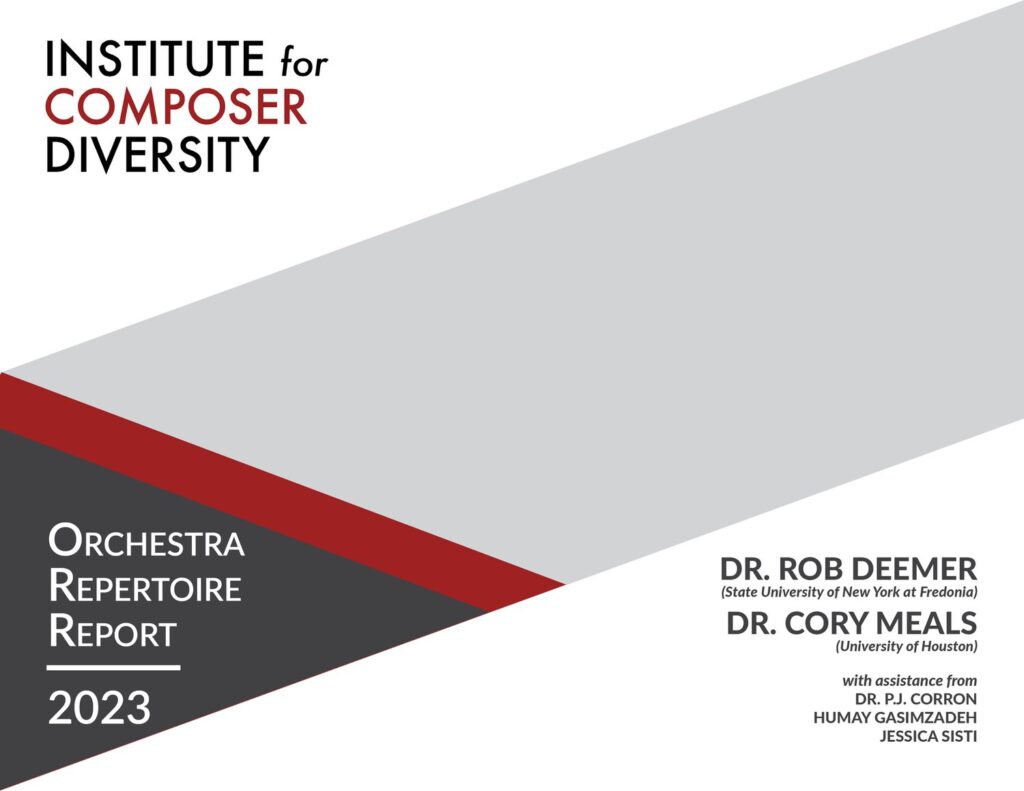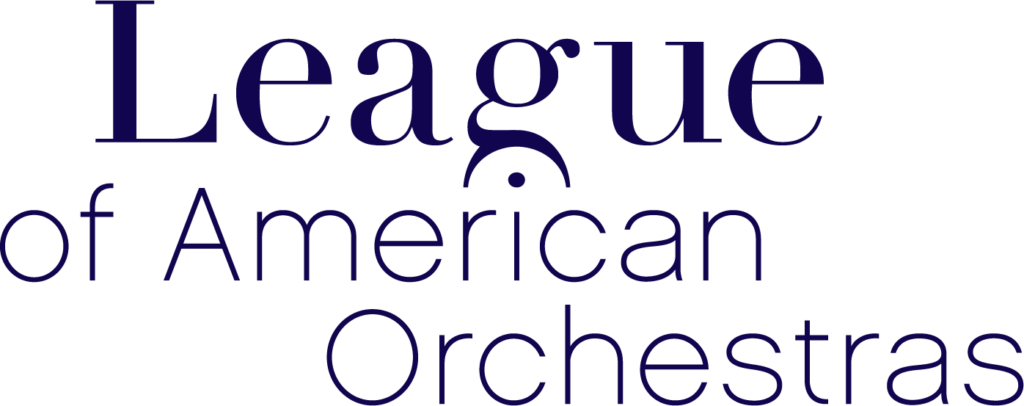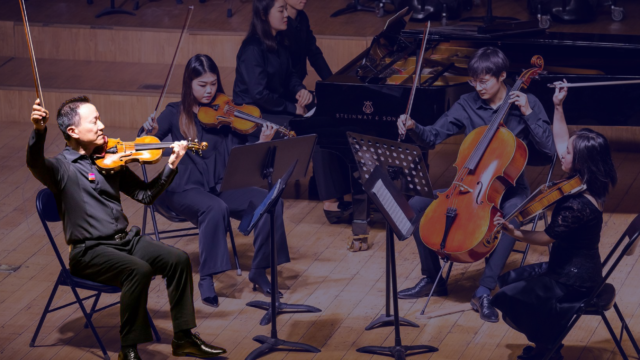2023 Orchestra Repertoire Report

The Orchestra Repertoire Report from the Institute for Composer Diversity, produced in partnership with the League of American Orchestras, examines the programming of BIPOC, women, non-binary and living composers by U.S. orchestras.
The report tracks programming trends from 2015 to the current season, based on data provided by League member orchestras. In 2023, 189 orchestras from all 50 states and the District of Columbia took part, supplying data about a total of 5,470 total works. Youth Orchestras and smaller budget orchestras joined the study for the 2023 season: 8 Youth Orchestras and 27 orchestras from budget groups 6-8 were featured for the first time in the 2023 report.
League Insights
It is important to celebrate the significant progress made by orchestras since data collection began during the 2016-17 season, by orchestras working in all budget groups and across all U.S. regions. It is equally important to contextualize the progress that has been made, and to recognize where challenges remain.
Between the 2016-17 and 2022-23 seasons:
- The programming of works by living composers grew from 10.7% to 21.9%:
- Living BIPOC composers grew in representation from 1.5% to 11%; and living White composers from 10.9% to 11.1%.
- Living women and non-binary composers grew in representation from 1.5% to 8.5%; and living men composers from 10.9% to 13.6%.
- The programming of works by women and non-binary composers (both living and deceased) increased from 1.7% to 12.3%:
- The percentage of programmed works by BIPOC women and non-binary composers (both living and deceased) grew from 0.2% to 5.9%.
- The percentage of programmed works by White women and non-binary composers (both living and deceased) grew from 1.5% to 6.2%
- The programming of works by BIPOC composers (both living and deceased) rose from 2.6% to 18%:
- Black composer programming increased from 0.3% to 10.3%: In 2022-2023, over twice as many works by Black composers were performed than by composers from every other racial/ethnic demographic combined.
- The representation of Black women composers (both living and deceased) grew from 0.02% to 3.6%.
- The representation of Black men composers (both living and deceased) grew from 0.28% to 6.7%.
- Latinx composer representation increased from 1.1% to 4.2%:
- Latina composers (both living and deceased) grew in representation from no programmed works to 0.6% of all programming.
- Latino composers (both living and deceased) grew in representation from 1.1% to 3.6%.
- Asian composer representation increased from 0.9% to 2.8%:
- The representation of Asian women composers (both living and deceased) remained broadly static.
- Asian men composers (both living and deceased) grew in representation from 0.8% to 1.6%.
- Black composer programming increased from 0.3% to 10.3%: In 2022-2023, over twice as many works by Black composers were performed than by composers from every other racial/ethnic demographic combined.
- The programming of works by White men decreased from 95.3% to 75.1%:
- The percentage of programmed works by deceased White men decreased from 85.7% to 68.4%.
- The percentage of programmed works by living White men decreased from 9.6% to 6.7%.
- Youth Orchestras took part in the study for the first time in 2023. A single year’s data from a relatively small number of participants can only be considered indicative, but it suggests that Youth Orchestras may be ahead of the curve in terms of program diversification.
- The percentage of works by living, BIPOC or women and non-binary composers programmed by participating Youth Orchestras was 31.6%, compared to 25.2% for smaller budget (Group 7 – 8) orchestras, and 19.5% for medium and larger budget orchestras (Group 1 – 6).
While the rapid expansion of diverse voices is promising, the growth should be considered in context. Despite a six-fold increase, women and non-binary composers still represent just over one in every ten works programmed in the 2022-2023 season. Similarly, works by BIPOC women composers boast just one in twenty to the one in ten held by BIPOC men.
Further improving the diversity of the orchestra repertoire requires doing all we can to address past discrimination (by recovering lost scores and popularizing known works by deceased BIPOC, women and non-binary composers); to create opportunities for living BIPOC, women and non-binary composers to be commissioned, performed, recorded, and distributed; and to address the barriers that impede BIPOC, women and non-binary composers from embarking on and progressing composer careers.
Take Part in the Next Repertoire Report
Participating in the Orchestra Repertoire Report is straightforward: there are NO surveys to complete! Simply email your current season program in spreadsheet format to ICD Director, Dr. Rob Deemer at rob@composerdiversity.com. See full details on the ICD website.
All data is confidential and will be reported at the aggregate level only. Questions about the survey? Please contact Rob Deemer: rob@composerdiversity.com.
Questions about these League Insights?
Please contact knowledge@americanorchestras.org.





The League’s partnership with the Institute for Composer Diversity on the 2023 Orchestra Repertoire Report is supported by generous grants from The Amphion Foundation, The Aaron Copland Fund for Music, the Mellon Foundation, and the National Endowment for the Arts, as well as, in part, by public funds from the New York City Department of Cultural Affairs in partnership with the City Council.
Related
-
Learn | Artistic Planning
Conference 2023: Diversifying your Audience Through Non-Classical Programming
-
Learn | Artistic Planning
Conference 2023: Commissioning and the Redefinition of Audience
-
Learn | Equity, Diversity & Inclusion
We Are What We Play, Part 2: How to Diversify Orchestra Programming
Become a member
Thank you for your interest in the League of American Orchestras! We are dedicated to advancing the orchestral experience for all.
Join Now
